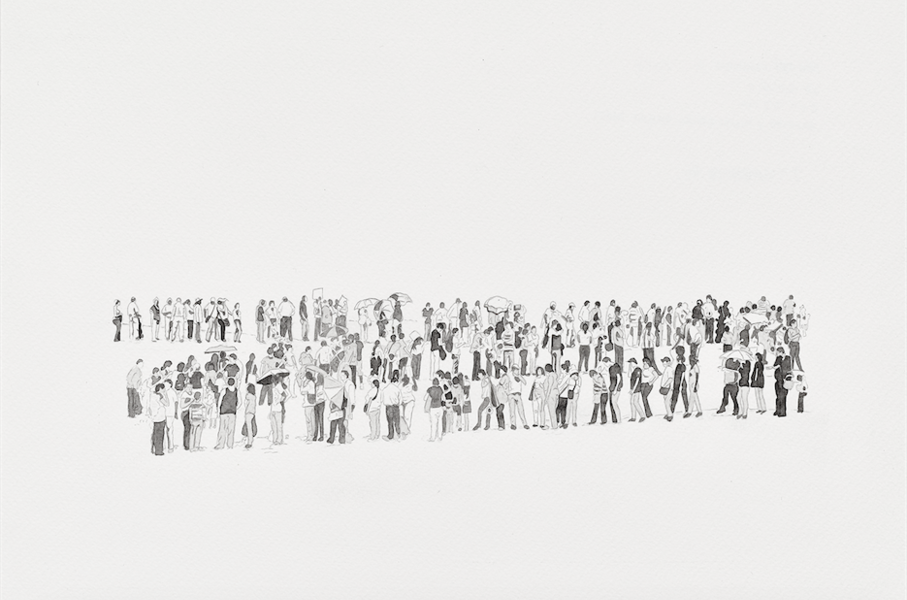For Freedoms, an exhibition for Venezuela at New York
For Freedoms is an artistic proposal in solidarity with Acción por la Libertad (Action for Freedom) a non-profit organization from Venezuela committed to freedom and democracy. Acción por la Libertad was born after the persecution and arbitrary detentions of political dissidents and students imposed by the Venezuelan government upon its citizens since the protests that started in February 2014. Four years after its founding, the organization the foundation’s objective is to promote human rights and to document and report violations against fundamental rights: freedom of opinion and expression, freedom of association and assembly and, more recently, freedom of movement. The exhibition opens on Thursday, June 21 at Henrique Faria Fine Art, in New York.

The title of the exhibition not only increases the objectives of Acción por la Libertad, but also refers to the momentous speech of President Franklin Delano Roosevelt in January 1941 and the effects of this speech on the cause of human rights and democracies on an international level. Also, more recently in the founding of the Political Action Committee, Freedoms, artists and activists Hank Willis Thomas and Eric Gottesman for the importance of art as an essential act of participation in civil society. The artists presented in this exhibition span several generations and represent various countries in Latin America and, as such, their work reflects the evolution of social, political and economic events in the region in the last fifty years and the current state of affairs , particularly in Venezuela.
From the declaration of the liberties of Roosevelt, the artists invited to participate in For freedoms that establish comparisons with Latin America in the 70s and 80s and the desolate state of Venezuela at present, that create a resonance between the works of art exhibited.
Anteproyecto para la perforación de un muro de cemento (Preliminary project for the perforation of a cement wall), by Horacio Zabala can be interpreted as a chilling advance of the collaborative work of Daniel Ceballos and Diana López Lubianka. Drawing with the Right Side of the Brain (2018), on the other hand, with portraits of other political prisoners of the Maduro regime that Ceballos created inside El Helicoide in Caracas, a modernist building that has been converted into a jail for prisoners politicians. Siluetas (1986), by Fernando "Coco" Bedoya, is composed of human contours consisting of letters. The work emerges from the protest El Siluetazo that took place in Buenos Aires, in 1983, denouncing the repressive tactics of the Argentine Military Junta and the disappearance of political dissidents through silhouettes painted on the walls and floors of the Plaza de Mayo. The last one provides another historical context for the series La Cola (2018), by Juan José Olavarría, drawings that portray the profiles and silhouettes of Venezuelans who must endure waiting long lines to access basic needs, including food, medicine and documents legal The photoperformance of Carlos Zerpa, Ninguno de nosotros es mudo (No of us is mute, 1977) and Nuestra música (Our music) (2016), by Armando Ruiz explore how the repercussions of repression and censorship replace the voices of people with a harsh and silent void.
ForFreedoms exhibition emphasizes the relevance and power that art has had in protests and civic engagement throughout modernity through its ability to give body, language and voice to issues that challenge the status quo. Historical examples are: the cartel of El Siluetazo y Violencia (Violence), by Juan Carlos Romero stuck on the walls of Buenos Aires, the panoramic film by Iván Candeo of an imposing government building in the Miraflores neighborhood, Caracas, and the humorous landscape of didactic Juan Carlos Rodríguez in which an anonymous narrator explains the landscape in a Venezuelan painting full of guerrillas hiding in the vegetation.
As Thomas and Gottesman affirm in For Freedom's manifesto: "Participation is citizenship", and when seeing these works, when thinking and talking about them, the spectator becomes necessarily active, contributing to the circulation of new ideas beyond the reach immediate of the gallery and the art world.




